Scott Robert Hendrickson
age ~55
from Meridian, ID
- Also known as:
-
- Scott R Hendrickson
- Scott Robert Hendrick
- Scott R Hendeickson
Scott Hendrickson Phones & Addresses
- Meridian, ID
- Sahuarita, AZ
- 959 Ocean View Ave, Encinitas, CA 92024
- San Clemente, CA
- 4 El Campo Dr, South San Francisco, CA 94080
- Graeagle, CA
- Cardiff by the Sea, CA
- San Diego, CA
Specialities
Corporate • Acquisitions • Securities
Us Patents
-
Apparatus For Distributing Gases In A Chemical Vapor Deposition System
view source -
US Patent:6495233, Dec 17, 2002
-
Filed:Jul 5, 2000
-
Appl. No.:09/609994
-
Inventors:Inna Shmurun - Foster City CA
Scott Hendrickson - Brentwood CA
Gwendolyn Jones - Roseville CA
Shankar Venkataraman - Santa Clara CA
Son T. Nguyen - San Jose CA
I-Chun Eugenia Liu - Sunnyvale CA -
Assignee:Applied Materials, Inc. - Santa Clara CA
-
International Classification:B32B 302
-
US Classification:428 641, 428 661, 428 666, 118715, 118718, 118720, 118713, 118723 T, 118723 IR, 118723 E, 118723 R, 118723 ER, 118724, 118725
-
Abstract:A lid assembly for a semiconductor processing apparatus having at least two chambers comprises a lid plate having a first side and a second side and a plasma generation source mounted to the first side of the lid plate. Additionally, at least two gas boxes are coupled to the first side of the lid of the lid plate, and a divider is coupled between the plasma generation source and the at least two gas boxes.
-
Apparatus And Method For Treating A Substrate With Uv Radiation Using Primary And Secondary Reflectors
view source -
US Patent:7566891, Jul 28, 2009
-
Filed:Mar 15, 2007
-
Appl. No.:11/686878
-
Inventors:Juan Carlos Rocha-Alvarez - Sunnyvale CA, US
Thomas Nowak - Cupertino CA, US
Dale R. Du Bois - Los Gatos CA, US
Sanjeev Baluja - San Francisco CA, US
Scott A. Hendrickson - Brentwood CA, US
Dustin W. Ho - Fremont CA, US
Andrzei Kaszuba - San Jose CA, US
Tom K. Cho - Palo Alto CA, US -
Assignee:Applied Materials, Inc. - Santa Clara CA
-
International Classification:G01N 21/00
G01N 21/33
B01J 19/08
B29C 35/08 -
US Classification:250504R, 250365, 25049212, 2504922, 2504931
-
Abstract:Embodiments of the invention relate generally to an ultraviolet (UV) cure chamber for curing a dielectric material disposed on a substrate and to methods of curing dielectric materials using UV radiation. A substrate processing tool according to one embodiment comprises a body defining a substrate processing region; a substrate support adapted to support a substrate within the substrate processing region; an ultraviolet radiation lamp spaced apart from the substrate support, the lamp configured to transmit ultraviolet radiation to a substrate positioned on the substrate support; and a motor operatively coupled to rotate at least one of the ultraviolet radiation lamp or substrate support at least 180 degrees relative to each other. The substrate processing tool may further comprise one or more reflectors adapted to generate a flood pattern of ultraviolet radiation over the substrate that has complementary high and low intensity areas which combine to generate a substantially uniform irradiance pattern if rotated. Other embodiments are also disclosed.
-
High Efficiency Uv Curing System
view source -
US Patent:7663121, Feb 16, 2010
-
Filed:Jun 15, 2006
-
Appl. No.:11/424368
-
Inventors:Thomas Nowak - Sunnyvale CA, US
Juan Carlos Rocha-Alvarez - Cupertino CA, US
Andrzej Kaszuba - San Jose CA, US
Scott A. Hendrickson - Brentwood CA, US
Dustin W. Ho - Fremont CA, US
Sanjeev Baluja - San Francisco CA, US
Tom Cho - Palo Alto CA, US
Josephine Chang - Sunnyvale CA, US
Hichem M'Saad - Santa Clara CA, US -
Assignee:Applied Materials, Inc. - Santa Clara CA
-
International Classification:G01N 23/00
-
US Classification:25045511, 250504 R, 25045311
-
Abstract:An ultraviolet (UV) cure chamber enables curing a dielectric material disposed on a substrate and in situ cleaning thereof. A tandem process chamber provides two separate and adjacent process regions defined by a body covered with a lid having windows aligned respectively above each process region. One or more UV bulbs per process region that are covered by housings coupled to the lid emit UV light directed through the windows onto substrates located within the process regions. The UV bulbs can be an array of light emitting diodes or bulbs utilizing a source such as microwave or radio frequency. The UV light can be pulsed during a cure process. Using oxygen radical/ozone generated remotely and/or in-situ accomplishes cleaning of the chamber. Use of lamp arrays, relative motion of the substrate and lamp head, and real-time modification of lamp reflector shape and/or position can enhance uniformity of substrate illumination.
-
Apparatus And Method For Exposing A Substrate To A Rotating Irradiance Pattern Of Uv Radiation
view source -
US Patent:7777198, Aug 17, 2010
-
Filed:Mar 15, 2007
-
Appl. No.:11/686881
-
Inventors:Juan Carlos Rocha-Alvarez - Sunnyvale CA, US
Thomas Nowak - Cupertino CA, US
Dale R. Du Bois - Los Gatos CA, US
Sanjeev Baluja - San Francisco CA, US
Scott A. Hendrickson - Brentwood CA, US
Dustin W. Ho - Fremont CA, US
Andrzei Kaszuba - San Jose CA, US
Tom K. Cho - Palo Alto CA, US -
Assignee:Applied Materials, Inc. - Snata Clara CA
-
International Classification:H01J 37/20
-
US Classification:25045511, 2504921, 2504931, 250504 R, 362294, 362341, 362321, 362345, 118620, 118641, 118642
-
Abstract:Embodiments of the invention relate generally to an ultraviolet (UV) cure chamber for curing a dielectric material disposed on a substrate and to methods of curing dielectric materials using UV radiation. A substrate processing tool according to one embodiment comprises a body defining a substrate processing region; a substrate support adapted to support a substrate within the substrate processing region; an ultraviolet radiation lamp spaced apart from the substrate support, the lamp configured to transmit ultraviolet radiation to a substrate positioned on the substrate support; and a motor operatively coupled to rotate at least one of the ultraviolet radiation lamp or substrate support at least 180 degrees relative to each other. The substrate processing tool may further comprise one or more reflectors adapted to generate a flood pattern of ultraviolet radiation over the substrate that has complementary high and low intensity areas which combine to generate a substantially uniform irradiance pattern if rotated. Other embodiments are also disclosed.
-
Apparatus And Method For Exposing A Substrate To A Rotating Irradiance Pattern Of Uv Radiation
view source -
US Patent:8203126, Jun 19, 2012
-
Filed:Jul 22, 2010
-
Appl. No.:12/841935
-
Inventors:Juan Carlos Rocha-Alvarez - San Carlos CA, US
Thomas Nowak - Cupertino CA, US
Dale R. Du Bois - Los Gatos CA, US
Sanjeev Baluja - Sunnyvale CA, US
Scott A. Hendrickson - Brentwood CA, US
Dustin W. Ho - Fremont CA, US
Andrzei Kaszuba - San Jose CA, US
Tom K. Cho - Los Altos Hills CA, US -
Assignee:Applied Materials, Inc. - Santa Clara CA
-
International Classification:G01N 21/00
G01N 21/33
B01J 19/08
B29C 35/08 -
US Classification:250504R, 250365, 2504921, 2504922, 2504931
-
Abstract:Embodiments of the invention relate generally to an ultraviolet (UV) cure chamber for curing a dielectric material disposed on a substrate and to methods of curing dielectric materials using UV radiation. A substrate processing tool according to one embodiment comprises a body defining a substrate processing region; a substrate support adapted to support a substrate within the substrate processing region; an ultraviolet radiation lamp spaced apart from the substrate support, the lamp configured to transmit ultraviolet radiation to a substrate positioned on the substrate support; and a motor operatively coupled to rotate at least one of the ultraviolet radiation lamp or substrate support at least 180 degrees relative to each other. The substrate processing tool may further comprise one or more reflectors adapted to generate a flood pattern of ultraviolet radiation over the substrate that has complementary high and low intensity areas which combine to generate a substantially uniform irradiance pattern if rotated. Other embodiments are also disclosed.
-
High Efficiency Uv Curing System
view source -
US Patent:20060249175, Nov 9, 2006
-
Filed:Sep 20, 2005
-
Appl. No.:11/230975
-
Inventors:Thomas Nowak - Sunnyvale CA, US
Juan Rocha-Alvarez - Cupertino CA, US
Andrzej Kaszuba - San Jose CA, US
Scott Hendrickson - Brentwood CA, US
Dustin Ho - Fremont CA, US
Sanjeev Baluja - San Francisco CA, US
Tom Cho - Palo Alto CA, US
Josephine Chang - Sunnyvale CA, US
Hichem M'Saad - Santa Clara CA, US -
International Classification:B08B 3/12
B08B 7/00
B08B 9/00
H01L 21/306 -
US Classification:134001000, 134019000, 134022100, 156345100, 156345290
-
Abstract:An ultraviolet (UV) cure chamber enables curing a dielectric material disposed on a substrate and in situ cleaning thereof. A tandem process chamber provides two separate and adjacent process regions defined by a body covered with a lid having windows aligned respectively above each process region. One or more UV bulbs per process region that are covered by housings coupled to the lid emit UV light directed through the windows onto substrates located within the process regions. The UV bulbs can be an array of light emitting diodes or bulbs utilizing a source such as microwave or radio frequency. The UV light can be pulsed during a cure process. Using oxygen radical/ozone generated remotely and/or in-situ accomplishes cleaning of the chamber. Use of lamp arrays, relative motion of the substrate and lamp head, and real-time modification of lamp reflector shape and/or position can enhance uniformity of substrate illumination.
-
Tandem Uv Chamber For Curing Dielectric Materials
view source -
US Patent:20060251827, Nov 9, 2006
-
Filed:May 9, 2005
-
Appl. No.:11/124908
-
Inventors:Thomas Nowak - Sunnyvale CA, US
Juan Rocha-Alvarez - Cupertino CA, US
Andrzej Kaszuba - San Jose CA, US
Scott Hendrickson - Brentwood CA, US
Dustin Ho - Fremont CA, US
Sanjeev Baluja - San Francisco CA, US
Tom Cho - Palo Alto CA, US
Josephine Chang - Sunnyvale CA, US
Hichem M'Saad - Santa Clara CA, US -
International Classification:B05D 3/06
B05B 5/00 -
US Classification:427558000, 034275000, 034242000, 118641000
-
Abstract:An ultraviolet (UV) cure chamber enables curing a dielectric material disposed on a substrate and in situ cleaning thereof. A tandem process chamber provides two separate and adjacent process regions defined by a body covered with a lid having windows aligned respectively above each process region. One or more UV bulbs per process region that are covered by housings coupled to the lid emit UV light directed through the windows onto substrates located within the process regions. The UV bulbs can be an array of light emitting diodes or bulbs utilizing a source such as microwave or radio frequency. The UV light can be pulsed during a cure process. Using oxygen radical/ozone generated remotely and/or in-situ accomplishes cleaning of the chamber. Use of lamp arrays, relative motion of the substrate and lamp head, and real-time modification of lamp reflector shape and/or position can enhance uniformity of substrate illumination.
-
Nitrogen Enriched Cooling Air Module For Uv Curing System
view source -
US Patent:20070295012, Dec 27, 2007
-
Filed:Nov 3, 2006
-
Appl. No.:11/556642
-
Inventors:Dustin W. Ho - Fremont CA, US
Juan Carlos Rocha-Alvarez - Sunnyvale CA, US
Dale R. Du Bois - Los Gatos CA, US
Scott A. Hendrickson - Brentwood CA, US
Sanjeev Baluja - San Francisco CA, US
Ndanka O. Mukuti - Santa Clara CA, US -
Assignee:Applied Materials, Inc. - Santa Clara CA
-
International Classification:F25D 3/12
-
US Classification:62 56
-
Abstract:A re-circulating cooling system can be used with a curing system in order to reduce the exhaust requirements for the system. Further, using a cooling fluid such as nitrogen reduces the production of ozone and the sealing requirements for the system. A simple heat exchanger can be used between return and supply reservoirs in order to remove heat added to the re-circulating fluid during circulation past the curing radiation source. The nitrogen can come from a nitrogen source, or from a membrane or other device operable to split feed gas into its molecular components to provide a source of gas rich in nitrogen. An ozone destruction unit can be used with such a cooling system to reduce the amount of ozone to acceptable levels, and to minimize consumption of the nitrogen. A catalyst can be used to deplete the ozone that does not get consumed during the reaction.
Name / Title
Company / Classification
Phones & Addresses
GM
RPI Systems Ltd
Fire Protection Contractor
Fire Protection Contractor
61 13330 116 Ave, Surrey, BC V3R 0R8
6045839900
6045839900
GM
RPI Systems Ltd
Fire Protection Contractor
Fire Protection Contractor
6045839900
Information Technology Operations Senior Manager
Icon Clinical Research
Medical Research & Development
Medical Research & Development
8105 Irvine Ctr Dr, Irvine, CA 92618
9494530293, 9495858197
9494530293, 9495858197
Lawyers & Attorneys

Scott Hendrickson - Lawyer
view sourceSpecialties:
Corporate
Acquisitions
Securities
Acquisitions
Securities
ISLN:
909724366
Admitted:
1995
University:
Wartburg College, B.A., 1992
Law School:
University of Iowa, J.D., 1995
License Records
Scott Hendrickson
License #:
962 - Active
Category:
Psychologist
Issued Date:
May 21, 1982
Expiration Date:
Jul 31, 2018
Organization:
Scott Hendrickson, PhD
Myspace
Youtube
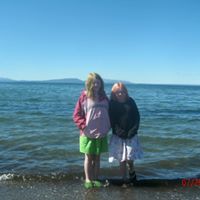
Scott Hendrickson
view source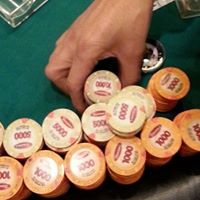
Scott Hendrickson
view source
Scott Hendrickson
view source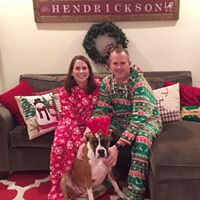
Scott Hendrickson
view source
Scott Thomas Hendrickson
view source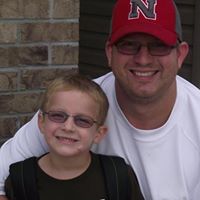
Scott Hendrickson
view source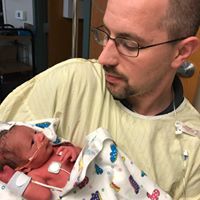
Scott Hendrickson
view source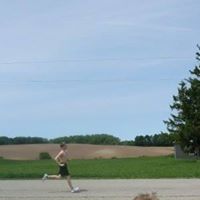
Scott Hendrickson
view sourceGoogleplus
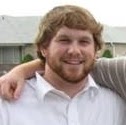
Scott Hendrickson
Work:
None
Education:
Brigham Young University
Tagline:
I'm Scott

Scott Hendrickson
Education:
Helsinki School of Economics - Business
Tagline:
Blond and beautiful.
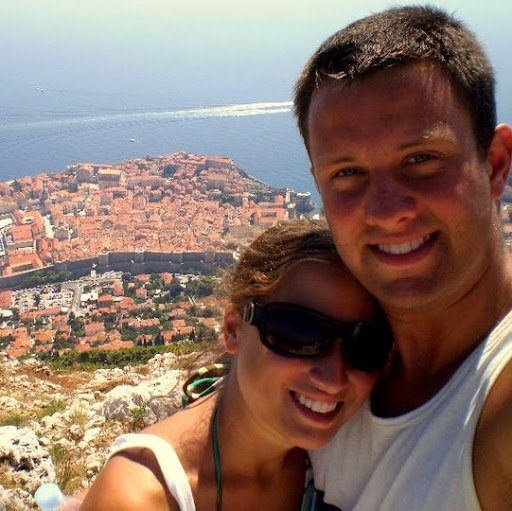
Scott Hendrickson
Education:
Boston College - Educational Leadership, Boston College - English and Secondary Education

Scott Hendrickson
Education:
University of Colorado at Boulder - Physics

Scott Hendrickson
Work:
United States Air Force - Airfield Management (2010)

Scott Hendrickson

Scott Hendrickson

Scott Hendrickson
Plaxo

Scott Hendrickson
view sourceLouisville, KYOwner | President at PROforma QFI | Marketing Solu... Past: Operating Partner/General Manager at GOLDS GYM HYDE PARK (Cincinnati)

Scott Hendrickson
view sourceHenderson, KY

Scott Hendrickson
view source
Scott Hendrickson
view sourcePresident at Heritage Counseling Center

Ginger Scott Hendrickson
view sourceMissouri State University

Scott Hendrickson
view sourceNew York
Classmates

Scott Hendrickson
view sourceSchools:
Dassel High School Dassel MN 1990-1994
Community:
Shiela Okeefe, Laurine Lynn, Carol Palm, Suzanne Willette

Scott Hendrickson
view sourceSchools:
sahauro high school Tucson AZ 1984-1988
Community:
Thomas Metz, Luke Bronson, Yvonne Laporte, Terry Scarpella

Scott Hendrickson
view sourceSchools:
South Range Elementary School South Range MI 1983-1989, Jeffers High School Painesdale MI 1992-1996
Community:
Judith Eric, Lisa Johnson, Timothy Zuidmulder

Scott Hendrickson
view sourceSchools:
Shattuck-St. Mary's School Faribault MN 1971-1975
Community:
Jeff Collins, Kristy Nerud, Lynn Gilbert, Lori Valeri, Barbara Cross, Hal Newell

Scott Hendrickson
view sourceSchools:
Foley High School Foley MN 1980-1984
Community:
Cindy Lalley, Lawrence Scheibel

Scott Hendrickson
view sourceSchools:
Marshfield High School Marshfield WI 1991-1995

Scott Hendrickson
view sourceSchools:
Gillett High School Gillett WI 1992-1996
Community:
Luanne Lotter

Scott Hendrickson
view sourceSchools:
Mt. Sentinel High School South Slocan Saudi Arabia 1983-1987
Community:
Nick Horvath, Brian Christie, Courtney James
Get Report for Scott Robert Hendrickson from Meridian, ID, age ~55












